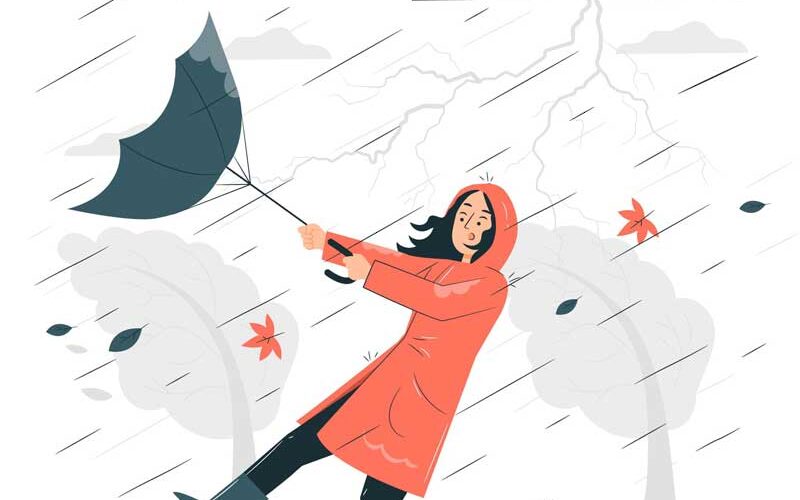We evaluate both our necessities and wants when we make judgments about how to spend our money and allocate resources on a daily basis. What if outside variables like the weather unintentionally influence our purchase decisions? We investigate how the weather affects our purchasing decisions in response to this fascinating subject. In this article, we’ll be discussing how weather-related elements like sun, snow, and rain might impact our costs.
The impact of weather on market decision-making
Researchers from the University of Portsmouth’s Center for Innovative and Sustainable Finance investigated the correlation between sunny weather and the performance of market participants. Their findings reveal that the intensity and duration of sunlight have a significant impact on investment decisions. During the sunny periods, investors placed higher bids, which reduced discounts for shares in the primary market. The modest increase in sunshine intensity of one standard deviation led to a 2.4% decrease in bid discounts, and the increase in one deviation of sunlight duration resulted in a 3.3% decrease in bid discounts. This is due to the fact that investors develop a positive outlook and take more risks without considering their underlying asset value. (Sun et al., 2023). Additionally, for most individuals, buying a house or a car is a significant life event, so they should exercise extreme caution when choosing what to buy. The National Bureau of Economic Research claims that the weather also has an impact on the decision-making process about spending. Convertibles and swimming pools are among the features of cars and homes that buyers seem to appreciate more on sunny days, even if they increase the average cost of housing to $1,600. Conversely, they like features associated with frigid climates, such as four-wheel-drive cars. the region where annual temperatures are largely consistent (Wile, 2012).
This result can be applied to advertisements.
Researchers analyzed the extensive dataset encompassing all the items sold on an online auction throughout the year to find the correlation between the purchase time and the weather at the time in the buyer’s location. As a result of the research, they found that bidders at auction pay a much higher price for products associated with sunny or snowy conditions. If a product page displays a large number of images of weather conditions, bidders tend to spend more money on the product. However, the price of products associated with rainy weather decreased on rainy days. From this result, the researchers suggest that the bidders are engaging in a cognitive process known as “mental simulation,” in which they envision their feelings while using the product in certain situations. The stronger the positive images they have, the higher the amount they are willing to pay for products. Positive images, such as driving a convertible on a sunny day or skiing in the snow, can increase the perceived value of the product. Conversely, negative images such as walking in the rain can decrease the amount customers are willing to pay. Therefore, weather-related imagery can influence customers’ desires rather than essential needs (Gannet, 2020).
Conclusion
In summary, this study has shed important light on how weather affects decision-making about expenditures. According to the study, investors’ emotions are significantly impacted by the amount of sunshine and intercity travel, which makes them less risk-averse and more inclined to invest in their companies. Furthermore, the results show that purchasing decisions made by consumers can be influenced by weather. Spending on weather-related elements in their local area is higher. Additionally, the study found that weather imagery has an effect on human decision-making processes in addition to real weather conditions. Consumers are more likely to concentrate on products with images of the weather that evoke positive emotions. For instance, convertibles are more appealing with the image of sunny weather, and ski gear is more appealing with snowy weather. On the other hand, products that evoke negative emotions are not attractive to consumers. Walking on a rainy street with an umbrella is not an exciting scenario to envision.
Gannett, A. (2020). How Weather Affects Decision-Making (According to Science). [online] Available at: https://www.linkedin.com/pulse/how-weather-affects-decision-making-according-science-allen-gannett [Accessed 5 July 2023].
Sun, Q., Cheng, X., Gao, S., Chen, T. and Liu, J. (2023). Sunshine-induced mood and SEO pricing: Evidence from detailed investor bids in SEO auctions. [online] Available at: https://www.sciencedirect.com/science/article/abs/pii/S0929119923000603?via%3Dihub [Accessed 4 July 2023].
Wile, R. (2012). The Time Of The Year Influences What House Or Car You Buy. [online] Available at: https://www.businessinsider.com/the-effect-of-weather-on-purchasing-decisions-2012-11 [Accessed 5 July 2023].
